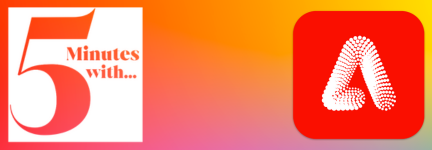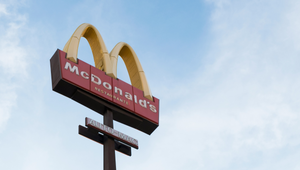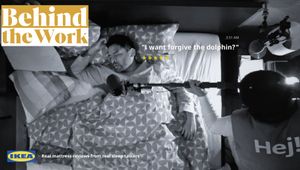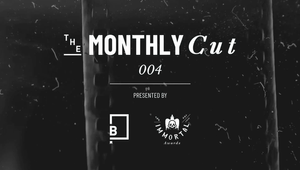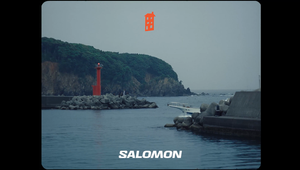
5 Minutes with… Tom Carey

From agency hallways to global tech giants, Tom Carey’s creative career has been shaped by curiosity, bold moves, and a belief in design’s power to make life better.
From London pubs to Sydney boardrooms and Silicon Valley campuses, and now creative direction at Canva, Tom is bringing that philosophy to a platform on a mission to “empower the world to design,” balancing global scale with a deeply human approach to creativity.
He talks to LBB’s Olivia Atkins about the power of meaningful design, weaving practical function into creativity, and why passion and curiosity have been the driving forces throughout his career.
LBB> Your career has taken you from agencies like Wolff Olins to global tech companies like Meta and now Canva. What have been the pivotal moments in that journey, and did you always know you wanted to work as a creative?
Tom> I’ve always gravitated toward creative and design, partly because everything else at school made my brain hurt too much. Thanks to inspiring teachers, from school to Kingston University, I discovered that design could actually be a meaningful career. Ideas and design came naturally, and I love that as a designer you can add something positive to the world; design can make our world more beautiful, safer, easier and more enjoyable.
The first pivotal moment actually happened at a pub in London on a very ordinary Thursday evening when my mentor and friend Oliver Maltby casually asked if I wanted to move to Australia for a job. I’ve always been curious and find it hard to turn down exciting opportunities so naturally I said yes. A decision that changed my life. It led me to a new country, meeting my wife, and landing my first creative director role.
After years on the agency side, curiosity struck again. A role at Meta came up, and with it, the opportunity to move to the US and work in-house at one of the world's biggest tech companies. The idea of building brands and design systems in the AR/VR space made my ears prick up, and I joined Meta and moved to California. I learned how to design at scale, navigating cross-functional teams, and millions of users. It taught me how to make every moment intentional, delightful, and distinct through design, design that really works.
Wolff Olins was my dream agency: bold, ambitious, and unafraid to break the mould (London 2012 Olympics still stands out). There, I learned to blend creative ambition with effective design, helping brands like LG, The Economist, and Lloyds become distinct, usable, and full of character.
All of that brought me to Canva, a company with a mission I truly believe in: empower the world to design. It’s the perfect place to apply everything I’ve learned, and one I’m proud to stand behind.
LBB> At Canva, you’re leading creative in a company that’s at the intersection of design, technology, and global accessibility. How do you balance brand storytelling with the scale and functionality of a tech platform?
Tom> I think the best brands have emotion in their DNA and, maybe more importantly, emotional intelligence. That starts with understanding what people actually need. Sometimes it’s a story that sparks imagination; other times, it’s design that quietly does its job: clear, helpful, and unobtrusive. Starting from this place ensures you’re designing for people, creating something they genuinely want to engage with.
LBB> What drew you to Canva specifically, and how does its mission of “empowering the world to design” shape your day-to-day as a creative leader?
Tom> The mission is what really stood out. It’s a bold idea, but it’s also deeply practical. Design has traditionally been something you needed training or expensive tools to access. Canva flips that by making creativity accessible to anyone, anywhere.
As a creative, that mission shows up daily. We're building for a truly global audience, but we’re also Customer Zero, meaning we use Canva in our own creative work. That direct feedback loop is powerful. It keeps us grounded in the user experience because we are the users too. It means we care just as much about how a design tool feels in our hands as how it works for a teacher in Berlin or a marketer in Milan.
There’s also this unapologetic tone to Canva's brand: it’s distinctive, playful, and full of personality. We don’t take ourselves too seriously, even though we take our work seriously. That gives us freedom to push boundaries creatively. But this isn’t a one-size-fits-all. What resonates in the UK might miss the mark in France or Germany. So I work closely with our regional teams to make sure what we create feels authentic, local, and emotionally resonant. But all while still feeling very Canva.
LBB> You’ve worked across continents and collaborated with some of the world’s biggest brands. What do you think defines creative impact today, and how do you keep it human in an increasingly AI-powered space?
Tom> The ability to connect emotionally is key, and how work that truly lands is the work that resonates. In a world increasingly powered by AI, the elements that remain deeply human, like empathy, humour, cultural insight, are what cut through the noise.
AI is a fundamental tool in our workflow, it’s helping to take the mundane work off our plates, like speeding up execution or resizing assets. But the real creative advantage comes when we use that freed-up time to rediscover our curiosity. That's how ideas gain meaning. AI raises the creative floor, but it’s human insight and emotional intelligence that build stories people care about. And that’s the creative impact that lasts.
I’m always most delighted when great work is grounded in human emotion and cultural insight. Our recent London billboard takeover — “Make the logo bigger’ — resonated globally because it tapped into a shared experience. That kind of observation is why I still believe the most impactful work is rooted in real, not artificial, understanding.
LBB> What do you find most rewarding about your role now, and what advice would you give to younger creatives looking to build a career that bridges both brand and product?
Tom> I absolutely love meeting people and hearing how important Canva is to them and their work. Seeing the brand love, the product admiration and learning what a difference Canva makes to them is really inspiring to hear and not always that common when you work in design.
I also love seeing the impact design can have on a business. When design really works, whether it’s a rebrand, an ad, or a product moment, it moves people. From early user testing to final launch, it’s powerful to see how thoughtful decisions can shift perception, spark emotion, and leave a lasting impression. That emotional impact is what drives me.
I also spend a lot of time meeting and talking to other creatives and some people think you need to be in a major city to do great design. But you don’t have to be in London to do great creative (shock horror, I know) . My team is based all over the UK and Europe and I love that we can build a team of the best talent, attitudes and personalities, no matter the location. We also live in a digital-first world, and that means being able to tap into your own environment and the communities around you. Own your perspective, because great design often comes from being rooted in something authentic and more and more something different and something surprising.
For younger creatives, I'd encourage them to always search for something they really believe in and give everything they’ve got to learn from great people around them. I recently learnt about the concept of ‘askers’ and ‘guessers’: askers ask for what they need and want, guessers presume others know or don’t want to put people out. My advice is be an asker — ask for help, ask if you can help out, ask why, ask for advice, ask for introductions and most importantly ask ‘what if’.






